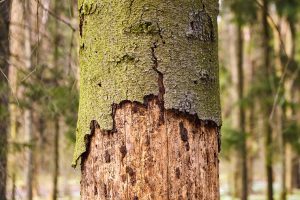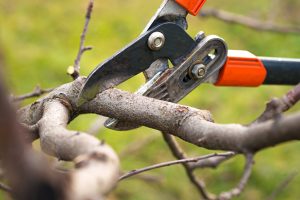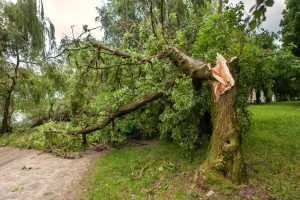Severe storms do upwards of 54 billion dollars worth of damage to residential areas each year.
Broken trees are some of the most common types of damages homeowners deal with after these storms. Without proper attention, these trees may end up dying, leaving you with even more of a hassle to clean up.
If you’re uncertain how to care for injured trees, keep reading. We’ll go through the types of tree damage and how to handle each one.
Inspect the Damage
The very first step is to take a closer look at the tree in question.
If you’re doing this right after a bad storm, make sure to take extra precautions. Falling limbs and branches are potential health hazards and you should approach with care. Never try to remove a large branch that rests high up in the tree without professional help.
Now it’s time to look at the most important parts of a tree. These areas include the crown of the tree, the base trunk, and the roots. Oftentimes, if there is severe damage to any of these areas, the tree is in danger of dying.
Once you’ve located the main damage, then you can take the next steps in trying to fix the problems.
A Few Broken Branches
Broken branches are very common after a storm, or even after a strong wind. These thinner sections of the tree are easy to break and don’t pose much of a threat to the tree when broken in small amounts.
In most cases, the little twigs you see lying on the ground may be a nuisance, but that’s all. Clip away any other broken branches you see. The tree should have no problem growing back those branches and compensating for their loss.
If there’s an excessive amount of broken branches, the tree could struggle to bring in enough nutrients to heal itself. In this case, waiting to see what happens is all that’s necessary.
Ruined Limb
If there’s a broken large limb, however, that’s cause for much more concern. This single limb is home to an entire section of branches, leaving that area weakened.
Worse than that is the risk of pests finding their way into the exposed section of the bark. Chisel away any raggedy bark to smooth out those edges until you reach an area where the bark is whole again. This closes any gaps between the bark and the soft center of the tree.
When the limb is still attached to the rest of the tree, it’s possible to reattach it but this requires professional help. Trying to DIY this kind of recovery without experience often ends up harming the tree even more.
Torn Bark
If there are large sections of torn bark, repeat the same chiseling as in the last paragraph. You want to close off those gaps right away to stop any pests from finding their way into the tree.
Always be careful not to cut too much into the tree of itself. If you start to see a hint of green, it’s time to stop pruning. Those greener layers are how the tree draws in and distributes water and other nutrients.
Too much exposure to these soft green areas could result in irreparable damage to the tree.
Exposed Roots
Sometimes during a severe storm, soil around a tree shifts, exposing the nutrient-seeking roots beneath. Most of the time, this isn’t a danger to the tree as long as you replace the soil that once covered them.
Either shift the old soil back into place or purchase extra nutrient-rich soil to replace the old dirt. The benefit of doing the latter is that you’re giving the roots an extra boost of nutrients to replenish anything the tree lost during the storm.
If the entire tree is uprooted, it’s not an easy task to replant unless it’s a very young tree. In these cases, it’s best to ask a professional tree service to come and take a look.
Split Trunks
When you see a split trunk, the tree is not often salvageable.
If the tree can no longer hold itself upright or there’s exposure to the very center of the trunk, the tree is most often beyond repair. The tree can’t grow the sections back together and the soft center is now exposed to the elements and pests.
In a few rare cases, lashing the two sections of the trunk together could be enough to help the tree grow again. This is something that a professional tree service can do with their specialized tools and knowledge.
Toppled Crown
Some storms are strong enough to topple off the entire crown of the tree. Although a tree has little trouble recovering from the loss of a few branches or even a limb, losing the entire crown is not possible.
Without the crown of branches and limbs, the tree has no way to compensate for the loss of nutrients that those branches once gave. It’ll take some time before the tree dies, but its death is all but certain at this point.
When this happens, call in your local tree service to remove the tree so that it doesn’t sit in place dying over the next few months.
For Severely Broken Trees, Call in the Professionals
Sometimes broken trees only need a little bit of time to grow back what they’ve lost. All you can do is wait and see what happens after you’ve given it as much help as you could. Large and healthy trees, or very young trees, are resilient and are the best at recuperating after all kinds of damage.
Other times, trees need extra help from professionals to get back to full health.
If you’re feeling uncertain about the state of your broken trees, it’s best to get some outside help. Professional tree services know how to fix any savable tree, and they know how to dispose of a ruined tree. There’s no guesswork and it’s the best way to save as many trees as possible.
Please contact us at any time for all of your tree service needs!





